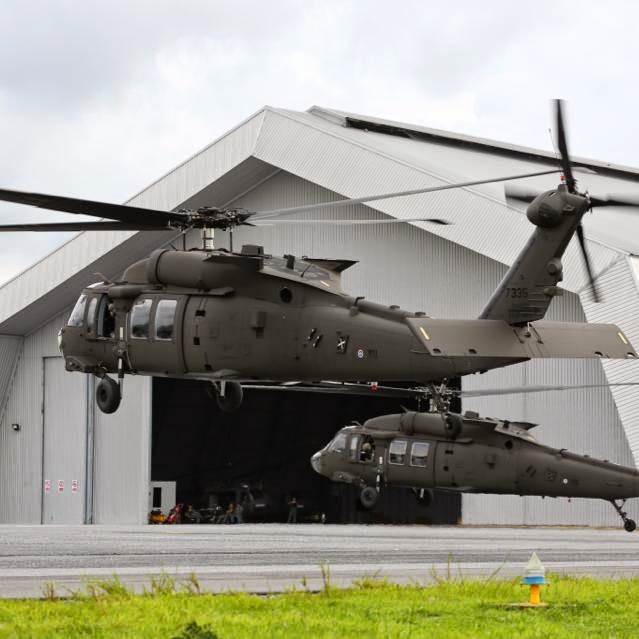Professional Insights: Enhancing Effectiveness in UH 60 Helicopter Procedures
Professional Insights: Enhancing Effectiveness in UH 60 Helicopter Procedures
Blog Article
Recognizing the Mechanics and Engineering Behind Uh 60 Helicopters
The UH-60 helicopter, frequently known as the Black Hawk, stands as a pinnacle of modern rotorcraft technology, symbolizing a mix of durable engineering and elaborate auto mechanics. As we peel off back the layers of the UH-60's layout, a world of detailed systems and thorough engineering comes to light.
History of UH-60 Helicopters
The background of UH-60 helicopters traces back to the late 1970s when the United States Military looked for a versatile and sophisticated energy helicopter to change its aging fleet. In response to this need, the Sikorsky Airplane Corporation developed the UH-60 Black Hawk helicopter. Introduced in 1979, the UH-60 promptly came to be a staple in army operations due to its impressive capacities.
The UH-60 was designed to master a variety of missions, consisting of troop transport, clinical evacuation, electronic war, and special operations. Its capability to adjust to different functions made it an important property to the united state Army and various other military forces around the globe
Over the years, the UH-60 system has actually gone through several upgrades and variations to boost its performance and equal progressing objective needs. These helicopters have seen comprehensive solution in conflicts such as the Gulf Battle, Afghanistan, and Iraq, showcasing their dependability and versatility in varied operational environments. The UH-60's abundant background is a testament to its long-lasting legacy as a top utility helicopter.

Engine and Power Systems
Using innovative propulsion technology, UH-60 helicopters are equipped with innovative engine and power systems to make sure ideal performance and dependability in an array of operational situations. The UH-60, typically known as the Black Hawk, is powered by 2 General Electric T700-GE-701D engines, each efficient in providing up to 1,940 shaft horse power. These turboshaft engines supply the necessary drive for the helicopter to lug out its goals successfully, including troop transportation, medical emptying, and fight support.

Rotor System and The Rules Of Aerodynamics
Just how do the blades system and aerodynamics of UH-60 helicopters add to their operational effectiveness and flight capacities? The rotor system of the UH-60 helicopter plays a critical duty in supplying lift and propulsion.
Aerodynamics also play a key duty in the performance of UH-60 helicopters. The structured body and rotor blade design minimize drag, enabling the helicopter to attain greater speeds and far better fuel effectiveness. The wind resistant layout of the UH-60 additionally adds to its capability to run in diverse ecological problems, consisting of hot temperature levels and high elevations.
Avionics and Flight Control Systems

In its elaborate control with the rotor system and the rules of aerodynamics of UH-60 helicopters, the avionics and flight control systems create a crucial network of innovations shaping the airplane's operational capacities. In the UH-60, these systems consist of electronic display screens, communication radios, GPS navigation, weather radar, and auto-pilot systems.
The trip control systems of the UH-60 are accountable for converting the pilot's inputs into the suitable changes to the blades system, guaranteeing steady flight and ability to move. These systems contain hydraulic actuators, servos, and computers that function together to control the tail and main blades, along with various other flight control surfaces. By specifically taking care of the helicopter's trip dynamics, these systems allow pilots to perform a vast array of goals, from transport and search-and-rescue to fight procedures, with precision and like it confidence.
Role and Applications in Aeronautics
The duty and applications of avionics and trip control systems in aviation are important to guaranteeing the reliable and safe hop over to here procedure of airplane, consisting of UH-60 helicopters. Avionics systems in UH-60 helicopters encompass a series of electronic systems that aid in navigation, communication, monitoring, and regulating numerous airplane features. These systems include digital displays, auto-pilot systems, communication radios, general practitioner navigation equipment, and weather condition radar. Flight control systems play a critical duty in steering the helicopter in the air, preserving stability, and making sure accurate motions. The fly-by-wire technology used in modern-day UH-60 helicopters equates pilot inputs right into electronic signals, which are then interpreted by the flight control computers to change the airplane's control surfaces. Additionally, these systems include security features such as auto-pilot modes, terrain recognition advising systems, and stability augmentation systems to boost the overall safety and functional abilities of the UH-60 helicopters in different missions, including army transportation, clinical evacuation, search and rescue, and aerial firefighting.
Conclusion
In verdict, the UH-60 helicopter is a versatile aircraft with a rich background and progressed engineering. Its engine and power systems, rotor system, the rules of aerodynamics, avionics, and trip control systems all function with each other to make it a efficient and trusted maker.
In its elaborate sychronisation with the blades system and the rules of aerodynamics of UH-60 helicopters, the avionics and flight control systems develop a crucial network of innovations forming the aircraft's operational capabilities.The trip control systems of the UH-60 are accountable for equating the pilot's inputs into the suitable changes to the rotor system, making sure secure trip and maneuverability. Avionics systems in UH-60 helicopters include a variety of electronic systems that aid in navigating, communication, tracking, and managing different aircraft functions. In addition, these systems incorporate safety attributes such as auto-pilot modes, terrain understanding warning systems, and security augmentation systems to enhance the overall safety and security and operational capacities of the UH-60 helicopters in various objectives, including army transportation, medical evacuation, search and rescue, and aerial firefighting.
Its engine and power systems, image source rotor system, aerodynamics, avionics, and trip control systems all function with each other to make it a effective and reliable device.
Report this page